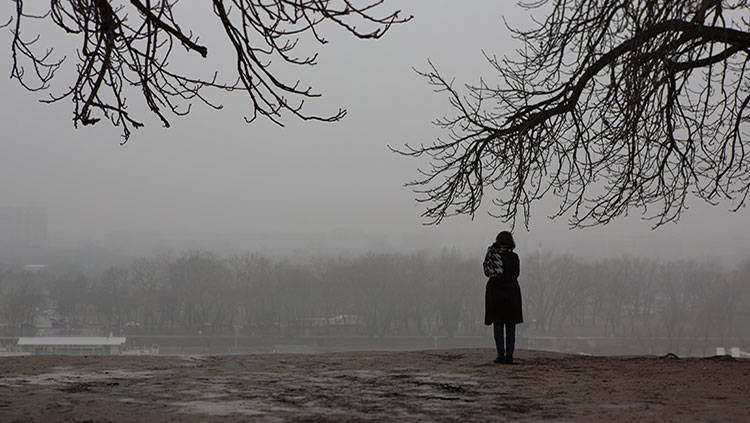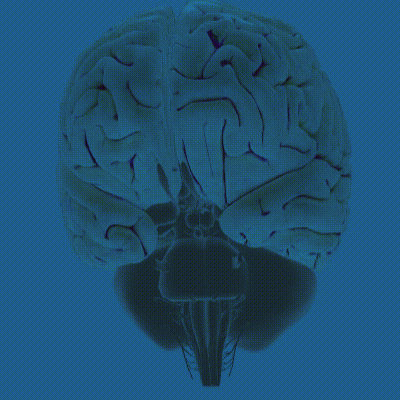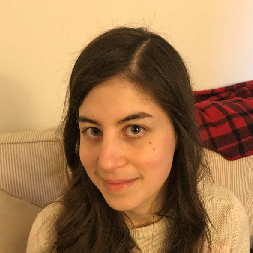What Is Seasonal Affective Disorder?
- Published26 Jan 2021
- Author Hannah Zuckerman
- Source BrainFacts/SfN

Watching the sun creep down during your mid-afternoon walk is a sign that winter is coming. People in the Southern Hemisphere experience the shortest day in June, while those in the Northern Hemisphere deal with it in December. But no matter when it happens, everyone faces the harsh reality of living with limited sunshine. For many people, wintertime brings the onslaught of a seasonal depression known as seasonal affective disorder, or SAD. Michael A. Young at the Illinois Institute of Technology has spent years studying SAD to get a better handle on treating the disorder. He explains what SAD is, how it differs from typical seasonal mood changes, and how it’s treated.
What is seasonal affective disorder?
SAD was first recognized in 1984, though there are references to it dating back to ancient Rome and Greece. We know people with SAD experience physical and psychological changes every winter. They feel lethargic, sleep more, and eat more, especially carbohydrates. They also feel sad, have difficulty concentrating, and possibly feel guilty or worthless.
But most of the animal kingdom, including humans, experiences change across the seasons. The physical aspects — sleep changes, energy changes, and appetite changes — are probably normal, but for some people they’re extreme. People living in the Northern Hemisphere with SAD usually notice these changes around October or November, and they last until March or April. While SAD in the Southern Hemisphere has been studied very little, such changes might occur during the shorter months in June, July, and August.
This consistency helps us diagnose the disorder and contrast it with other problems. For example, if you start experiencing issues in December during the holidays and feel better by the end of January then you probably don’t have SAD. Even though your symptoms occur in winter, that timeline doesn’t line up with SAD.
How do changing seasons affect the brain?
One of the biggest differences across the seasons is length of day, and it’s one of the main factors that influences SAD. In the north, it peaks on June 22 and is shortest around December 21. The farther north you are the shorter the days are in winter and the longer they are in the summer. The same is true for the Southern Hemisphere, except in reverse: the shortest day is June 22 and the longest is December 21. If you’re at the equator, the days stay 12 hours light and 12 hours dark all year. Those two factors — the latitude of where you are on the Earth and the day of the year — determine the length of day.
The main thing that sets our biological clock is the length of the daylight. The clock is tied to our circadian rhythm, which is an internal process regulating our sleep-wake cycle and is tuned to the 24-hour day. To function, our bodies need to be synchronized to the environment, so we know when to eat or sleep. Most animals have a master clock set by the environment that lets parts of the body know the time so that synchronization can occur. Our master clock is in a part of the brain called the suprachiasmatic nucleus (SCN), and it coordinates all the biological clocks and keeps them in sync. For animals in the wild, their clock is almost entirely set by length of day. In humans, other factors can contribute like eating or social schedules. There’s evidence that disruptions in the clock contribute to the physical symptom changes in SAD like lethargy, increased appetite, and increased sleeping.
What are people with SAD reacting to during the winter? Is it a weather issue, like cloudy days or snow?
It’s important to separate weather from seasons. Weather changes hour to hour or day to day. Seasons are long-term changes. The length of day is one main factor in SAD. Short-term fluctuations in weather don't account for the long-term changes in SAD.
But there is some research into how weather, like temperature, cloudiness, or humidity, affects how we feel and how well we think. For example, on a hot, humid day most people are lethargic and may not think sharply. Those are probably biological effects though we don’t fully understand how they affect the brain. The military does a lot of research on this since soldiers always need to function at high levels. You couldn’t have pilots unable to fly well because it’s a hot day.
Summertime depression may be heat related and humidity related, so treatment includes staying in air conditioning. It’s relatively rare and we don’t understand much about it. People with summer SAD tend to have reduced appetite, weight loss, and difficulty sleeping whereas people with winter SAD are the opposite. Also, they seem especially sensitive to heat rather than light.
How is SAD treated?
There are two approaches since some symptoms are physical and caused by environmental changes and seasons and some symptoms are psychological reactions. The most well-studied treatment for physical symptoms is bright light therapy. Patients sit by very bright light, usually in the early morning. The therapy may help regulate the biological clock which gets disrupted by short days in winter.
On the psychological side, people with SAD respond to changes to their physical symptoms and their negative expectations by developing depressive symptoms and bad coping mechanisms. Cognitive behavioral therapy (CBT) helps patients address these issues. People learn to examine the negative thoughts that accompany depression like ‘I’ll never feel better’ or ‘I can’t do the things I want.’ They work through these inaccurate thoughts and replace them with more accurate ones. The other aspect of CBT is behavioral activation — helping people realize that they feel good doing pleasurable activities, so they re-engage in activities they had previously stopped doing.
This interview has been edited for length and clarity.
BrainFacts.org welcomes all your brain-related questions.
Every month, we choose one reader question and get an answer from a top neuroscientist. Always been curious about something?








